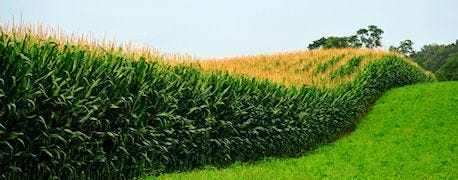December 13, 2014

The Fall 2014 CARD Agricultural Policy Review is now available. The Center for Agriculture and Rural Development at Iowa State University in Ames is part of the economics department at ISU. CARD publishes a quarterly newsletter that has good information farmers and others in the agricultural community can read and use.
The CARD website also has the popular "Ask an Ag Economist" segment. This is where CARD economists invite readers to submit questions to the CARD staff. The CARD economists will periodically choose questions of general interest and answer them in the next issue of the CARD Agricultural Policy Review newsletter.

THIS IS CARD: The Center for Agriculture and Rural Development is part of the economics department at Iowa State University. CARD publishes a quarterly online newsletter reporting on studies ISU staff economists have conducted on policy issues and other topics of concern to Iowa farmers.
Questions and answers will be posted on the CARD website. The economists who provide the answers may edit or adapt questions from their original form, and CARD does not guarantee an answer to all questions. The CARD staff also says: "We do not do homework, do not give financial advice, and do not provide research support."
Fall 2014 CARD Agricultural Policy Review now available at www.card.iastate.edu/ag_policy_review/. Here are some highlighted articles you may be interested in reading.
Food Safety Modernization Act: The Case for Complementary Public Regulation and Private Standards By Sebastien Pouliot and Helen H. Jensen
President Obama signed into law the Food and Drug Administration (FDA) Food Safety Modernization Act of 2010 (FSMA) in January 2011. FSMA is a set of regulations that modifies U.S. food safety laws and extends their scope. FSMA is considered to be the first major reform of U.S. food safety laws since 1938. FSMA specifically targets products that are under the jurisdiction of FDA and thus impacts products such as produce, dairy, seafood, fresh eggs and eggs used as ingredients. The stated objective of FSMA is to shift the focus from response to food contamination to prevention.
~~~PAGE_BREAK_HERE~~~
Weather Adjusted Yield Trends for Corn: A Look at Iowa By Lisha Li, Dermot Hayes, and Chad Hart
Yield growth in agricultural crops is of importance to those who make long-term projections of food availability and price levels. Menz and Pardey (1983) found that the trend growth in corn yields was lower in the 1970s than in the previous two decades. Tannura, Irwin, and Scott (2008) cited a number of crop experts and seed companies who believe that improved technology, particularity biotechnology, will increase the rate of yield growth in corn. Yu and Babcock (2010) found that percentage losses due to drought have been reduced over time, offsetting one of the major impediments to stronger yield growth. However, other researchers have argued that climate change will slow or even reverse the rate of yield growth (World Bank 2013).
Crop Insurance in Iowa By Alejandro Plastina and Chad Hart
Farmers across the nation rely heavily on crop insurance as a risk management tool-in Iowa alone over 93 percent of corn and soybean planted area was insured in 2014, but that participation rate hasn't always been the case. Participation in crop insurance declined substantially in the early 1990s after the mandate that required producers to purchase crop insurance in 1989 and 1990 to collect drought assistance in 1988 dissipated.
Strong Demand, but Inconsistent Profitability by Chad Hart and Lee Schulz
With the arrival of fall, the leaves change, the temperatures drop, and agricultural producers prepare for the winter ahead. This winter looks to be a reversal of fortunes across the agricultural complex. Over the past few years, crop producers have enjoyed record prices and profits, while livestock producers have suffered from high feed costs and negative returns. Now, several sectors of the livestock industry are looking forward to strong prices and good profitability. Meanwhile, the crop sector is staring at the lowest returns in several years. While there are some key differences in the structure of crop and livestock markets, the one similarity they share right now is strong demand for agricultural products.
~~~PAGE_BREAK_HERE~~~
Price Expectations and Risk Profiles Drive Commodity Program Choices By Alejandro Plastina and Chad Hart
The optimal commodity program choice depends as much on the specific production system in each farm as on the producer's expectations about future yields and prices. Furthermore, the risk profile of producers will weigh heavily in the decision. This article illustrates the role of price expectations and risk profiles in commodity program choice using the ISU Farm Bill Analyzer. It's available on ISU Ag Decision Maker website.
You May Also Like




